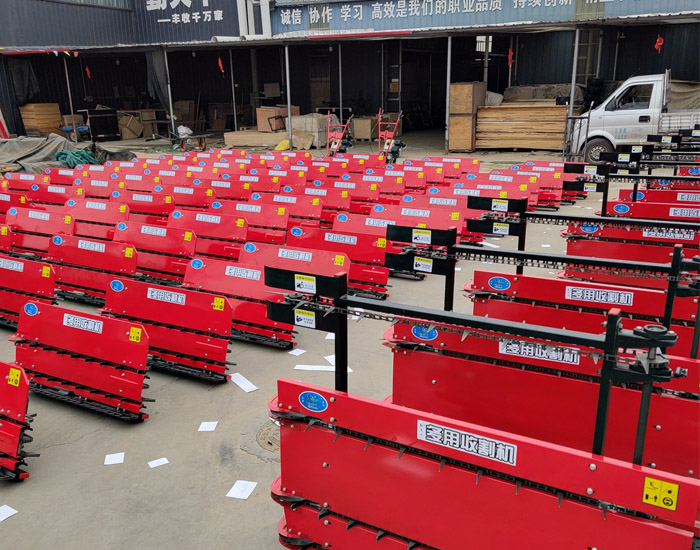Types of Paddy Reapers and Their Applications in Rice Harvesting
The Evolution of Paddy Reaper Types Enhancing Efficiency in Rice Harvesting
Rice is a staple food for more than half of the world's population, making the process of harvesting it a crucial agricultural task. Over the years, various technologies have been developed to improve the efficiency of rice harvesting, one of which is the paddy reaper. This article delves into the different types of paddy reapers and their evolution, examining how these machines have transformed rice farming.
Historical Context
Traditionally, paddy harvesting was a labor-intensive process, and farmers relied on sickles to cut the rice stalks by hand. While this method was effective, it was time-consuming and required a significant amount of manual labor. The invention of the paddy reaper in the early 20th century marked a significant turning point, allowing for quicker and more efficient harvesting.
Types of Paddy Reapers
1. Manual Paddy Reapers - Manual paddy reapers are an improvement over traditional sickles, designed to be operated by a single person. They consist of a scythe-like blade attached to a handle, allowing farmers to harvest rice with less physical effort. While they are still labor-intensive, they reduce the fatigue associated with manual cutting, especially over large fields.
2. Motorized Paddy Reapers - With advancements in technology, motorized paddy reapers became prevalent. These machines utilize a small engine to drive a set of blades that cut the rice stalks. Motorized paddy reapers can cover larger areas more quickly than their manual counterparts, significantly reducing the time required for harvesting. Furthermore, they ease the labor burden on farmers and allow them to harvest during optimal weather conditions.
paddy reaper type

3. Self-Propelled Paddy Reapers - Self-propelled paddy reapers represent the next level of technology in rice harvesting. These machines are equipped with an operator’s cabin and have the capability of moving across the fields independently. They often come with advanced features such as automatic height adjustment, allowing for more precise cutting of the crops. Self-propelled reapers can also be equipped with additional attachments that enable them to perform tasks such as threshing, separating the grains from the stalks, further increasing efficiency.
4. Combine Harvesters - The most advanced type of paddy reaper is the combine harvester, which combines both cutting and threshing in one operation. These high-capacity machines are designed to handle large fields of rice with minimal labor input. Modern combine harvesters are equipped with GPS technology and sensors that aid in precision farming, allowing farmers to optimize their yields and reduce waste. However, they require substantial investment, making them accessible primarily to larger agricultural operations.
The Impact of Technology on Rice Farming
The evolution of paddy reapers has had a profound impact on rice farming. Farmers can now harvest their crops in a fraction of the time it took previous generations, significantly increasing the productivity of rice cultivation. This enhancement in efficiency not only leads to better yield from the fields but also contributes to food security in regions dependent on rice as a staple food.
Moreover, the mechanization of harvesting has shifted labor dynamics in rural areas. While machinery reduces the demand for manual labor, it also facilitates the creation of new job opportunities in machine operation, maintenance, and related services. As a result, the agricultural sector continues to modernize, often pulling entire communities into a new economic reality.
Conclusion
The development of various types of paddy reapers has revolutionized rice harvesting, transitioning from labor-intensive manual methods to sophisticated machinery capable of maximizing efficiency and productivity. As technology continues to advance, we can expect further innovations that will not only streamline the harvesting process but also enhance the sustainability of rice farming. Embracing these advancements will be crucial for meeting the growing global demand for rice and ensuring food security for future generations.
Latest news
-
When to Upgrade Your Old Forage HarvesterNewsJun.05,2025
-
One Forage Harvester for All Your NeedsNewsJun.05,2025
-
Mastering the Grass Reaper MachineNewsJun.05,2025
-
How Small Farms Make Full Use of Wheat ReaperNewsJun.05,2025
-
Harvesting Wheat the Easy Way: Use a Mini Tractor ReaperNewsJun.05,2025
-
Growing Demand for the Mini Tractor Reaper in AsiaNewsJun.05,2025







